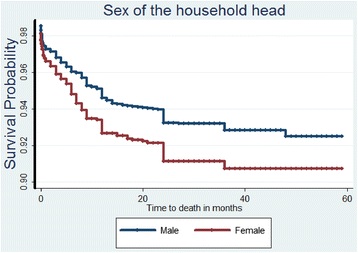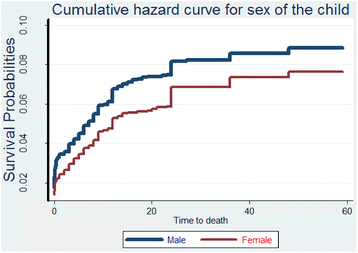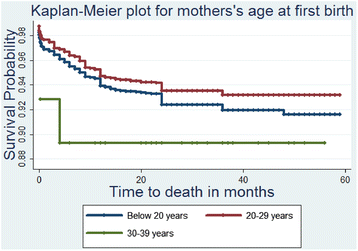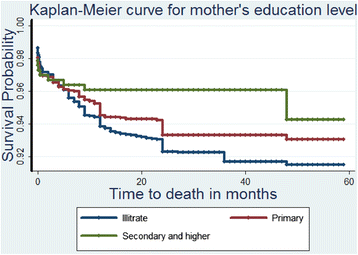Understanding the determinants of under-five child mortality in Uganda including the estimation of unobserved household and community effects using both frequentist and Bayesian survival analysis approaches
- PMID: 26428635
- PMCID: PMC4591593
- DOI: 10.1186/s12889-015-2332-y
Understanding the determinants of under-five child mortality in Uganda including the estimation of unobserved household and community effects using both frequentist and Bayesian survival analysis approaches
Abstract
Background: Infant and child mortality rates are among the health indicators of importance in a given community or country. It is the fourth millennium development goal that by 2015, all the United Nations member countries are expected to have reduced their infant and child mortality rates by two-thirds. Uganda is one of those countries in Sub-Saharan Africa with high infant and child mortality rates, therefore it is important to use sound statistical methods to determine which factors are strongly associated with child mortality which in turn will help inform the design of intervention strategies
Methods: The Uganda Demographic Health Survey (UDHS) funded by USAID, UNFPA, UNICEF, Irish Aid and the United Kingdom government provides a data set which is rich in information on child mortality or survival. Survival analysis techniques are among the well-developed methods in Statistics for analysing time to event data. These methods were adopted in this paper to examine factors affecting under-five child mortality rates (UMR) in Uganda using the UDHS data for 2011 in R and STATA software.
Results: Results obtained by fitting the Cox-proportional hazard model with frailty effects and drawing inference using both the frequentists and Bayesian approaches at 5 % significance level, show evidence of the existence of unobserved heterogeneity at the household level but there was not enough evidence to conclude the existence of unobserved heterogeneity at the community level. Sex of the household head, sex of the child and number of births in the past one year were found to be significant. The results further suggest that over the period of 1990-2015, Uganda reduced its UMR by 52 % .
Conclusion: Uganda has not achieved the MDG4 target but the 52 % reduction in the UMR is a move in the positive direction. Demographic factors (sex of the household head) and Biological determinants (sex of the child and number of births in the past one year) are strongly associated with high UMR. Heterogeneity or unobserved covariates were found to be significant at the household but insignificant at the community level.
Figures




References
-
- Ssewanyana S, Younger SD. Infant mortality in Uganda: Determinants, trends and the millennium development goals. J Afr Econ. 2008;17:34–61. doi: 10.1093/jae/ejm004. - DOI
-
- Kyaddondo B UGANDA POPULATION STABILISATION REPORT. Population Trends and Policy Options in Selected Developing Countries: 202.
Publication types
MeSH terms
LinkOut - more resources
Full Text Sources
Other Literature Sources
Miscellaneous

